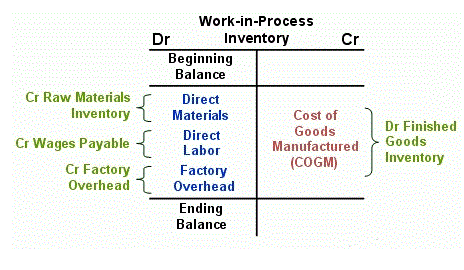
These contents closing entries are automated in modern accounting software. In essence, we are updating the capital balance and resetting all temporary account balances. Last, you close dividends accounts by debiting retained earnings and crediting dividends.
Revenue Recognition
This clears the revenue accounts to zero and prepares them for the next period. The total revenue is calculated and transferred to the income summary account. We see from the adjusted trial balance that our revenue account has a credit balance. To make the balance zero, debit the revenue account and credit the Income Summary account.
Related AccountingTools Courses

To determine the income (profit or loss) from the month of January, the store needs to close the income statement information from January 2019. As with other journal entries, the closing entries are posted to the appropriate general ledger accounts. After the closing entries have been posted, only the permanent accounts in the ledger will have non-zero balances.
AccountingTools
The closing entries are usually prepared prior to the adjusted trial balance. Instead, the basic closing step is to access an option in the software to close the reporting period. Doing so automatically populates the retained earnings account for you, and prevents any further transactions from being recorded in the system for the period that has been closed.
- We see from the adjusted trial balance that our revenue account has a credit balance.
- These accounts were reset to zero at the end of the previous year to start afresh.
- In this blog, we will discuss how to do closing entries in accounting, what is closing entries in accounting with examples, the 4 closing entries in accounting, and the purpose of closing entries in accounting.
- In this guide, we delve into what closing entries are, including examples, the process of journalizing and posting them, and their significance in financial close management.
- Close the income summary account by debiting income summary and crediting retained earnings.
- A net loss would decrease retained earnings so we would do the opposite in this journal entry by debiting Retained Earnings and crediting Income Summary.

Closing entries are journal entries made at the end of an accounting period closing entries to transfer balances from temporary accounts to permanent accounts. They represent a critical final step in the accounting cycle that ensures your books are properly prepared for the next accounting period by adjusting the account balance of temporary accounts. Closing entries are the financial reset button that ensures your accounting records accurately reflect each period’s performance.

This common scenario exemplifies the basics of closing entries, which involve crediting all revenue accounts to transfer their balances to the Income Summary account. Then, you debit the expenses, once again directing the balance to Income Summary, which now reflects your net income. Notice that revenues, expenses, dividends, and income summary all have zero balances. The post-closing T-accounts will be transferred to the post-closing trial balance, which is step 9 in the accounting cycle. Closing entries prepare a company for the next accounting period by clearing any outstanding balances in certain accounts that should not transfer over to the next period. Closing, or clearing the balances, means returning the account to a zero balance.
Step 1: Clear revenue to the income summary account
LO 5.1Explain what is meant by the termreal accounts (also known aspermanent accounts). Imagine comparing two periods side by side; the figures should represent their respective slices of time without overlap or gaps. This chain effect underscores the importance of sticking to a routine closing process and applying the same methods each time. It’s a discipline that creates a clearer, more comprehensible financial narrative, leading to better-informed decisions in the subsequent periods. If both summarize your income in the same period, then they must be equal. It is the end of the year, December 31, 2018, and you are reviewing your financials for the entire year.
- This clears the revenue accounts to zero and prepares them for the next period.
- By leveraging advanced workflow management, the no-code platform, LiveCube ensures that all closing tasks are completed on time and accurately, reducing the manual effort and the risk of errors.
- LO 5.1Identify whether each of the followingaccounts are nominal/temporary or real/permanent.
- They will be zeroed out, and the accounts closed, at the end of the period.
- Income summary account is a temporary account used to make closing entries.
Closing Entry in Accounting: How to Record & Examples
It is permanent because it is not closed at the end of each accounting period. At the start of the new accounting period, the closing balance from the previous accounting period is brought forward and becomes the new opening balance on the account. Other than the retained earnings account, closing journal entries do not affect permanent accounts. Closing entries in accounting are journal entries used to transfer balances from temporary accounts (revenue, expenses, and dividends) to permanent accounts at the end of an accounting period. Only temporary accounts require closing entries because they represent performance measures for a specific timeframe. Without closing entries, these accounts would continuously accumulate balances from period to period, making it impossible to accurately measure performance for each distinct accounting period.
Once adjusting entries have been made, closing entries Mental Health Billing are used to reset temporary accounts. In short, we can clear all temporary accounts to retained earnings with a single closing entry. By debiting the revenue account and crediting the dividend and expense accounts, the balance of $3,450,000 is credited to retained earnings. In other words, the closing entry is a method of making repayments on all the costs incurred within a given financial year.
With tools like Qbox Collaboration Suite, accountants can streamline these processes and improve efficiency. Closing entries don’t impact revenues or expenses on the income statement. Permanent accounts, also known as real accounts, do not require trial balance closing entries. Examples are cash, accounts receivable, accounts payable, and retained earnings.
